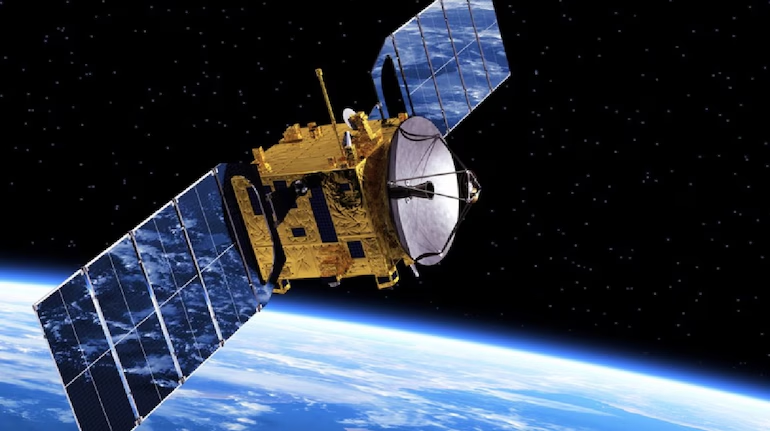Calling it a “challenging business situation,” Broadband India Forum (BIF) said the move burdens fledgling satcom companies that serve as the last-mile lifeline for connecting unserved and remote areas.
A proposed 4% spectrum usage charge on satellite operators and a five-year spectrum assignment could stall India’s satellite broadband ambitions and deepen the digital divide, the body representing satellite companies, Broadband India Forum (BIF), has cautioned.
Calling it a “challenging business situation,” BIF said the move burdens fledgling satcom companies that serve as the last-mile lifeline for connecting unserved and remote areas.
“On the spectrum front, not only has Satcom been suggested to be 4 times higher Spectrum Usage Charge than TRAI’s own earlier view of 1%, but the tenure has also been kept quite tight at 5 years. One could say this makes for a rather challenging business situation for the nascent satcom operators who are the de facto ‘lender of last resort’ for connecting the unconnected and underserved and tackling the sizable digital divide,” T.V. Ramachandran, President of Broadband India Forum, said in a note.
BIF represents satellite operators like OneWeb, Kuiper and Hughes and big tech companies like Google and Meta.
TRAI recommended that satellite communication companies, Starlink, Eutelsat-OneWeb, and the Jio-SES joint venture, pay 4 percent of their Adjusted Gross Revenue (AGR) as spectrum usage charges, aligning with the current framework for VSAT providers.
Starlink and Amazon’s Project Kuiper had urged TRAI during stakeholder consultations to cap spectrum charges below 1% of AGR, without additional levies. However, TRAI held firm, saying the AGR-based model aligns the cost of spectrum with the revenue generated from its use.
In its May 9 recommendation, the Telecom Regulatory Authority of India (TRAI) also proposed a minimum annual spectrum charge of Rs 3,500 per MHz for providers offering fixed and mobile satellite services. Additionally, fixed satellite services (FSS) operators in urban areas must pay Rs 500 per subscriber annually.
“While satellite has been primarily used globally to offer connectivity in rural and deep rural areas where deployment of any kind of fixed infrastructure is not commercially viable, the higher spectrum charges, especially in urban areas, do put the satellite providers on a back foot,” Ashwinder Sethi, partner at Analysys Mason, told Moneycontrol.
According to an analysis by Analysys Mason, the proposed spectrum charges for satellite services at 4 percent of AGR are higher than those for mobile services, where the DoT does not levy any SUC for 5G spectrum bought in the 3.5GHz and 26GHz bands.
“This implies that satellite service providers will pay spectrum charges of 4 percent of AGR, while the mobile (including FWA) service providers will be charged at less than 1.5 percent on a blended basis (across different spectrum bands),” Sethi said.
The body, however, lauded the authority’s recommendations that the Government provide a subsidy per fixed satellite user terminal in the unconnected and underserved locations.
“…it may be recalled that terrestrial operators have been provided over Rs 60,000 crores subsidy through USOF etc in past years) and stated that the subsidy could be made through a direct benefit transfer (DBT). This is a very laudable recommendation of immediate benefit to the end consumer waiting to get into the connected mainstream,” Ramachandran said.
TRAI has also ensured the healthy coexistence of terrestrial and satellite-based players and made the end consumer the real winner.
“The great message they delivered through these recommendations is that satcom and terrestrial are complementary, not competitive, and need to grow together to build a fully connected India. They had an unenviable task before them, but the Authority appear to have come out lustrous and shining,” Ramachandran added.
Eutelsat-OneWeb and Jio-SES have already secured the necessary GMPCS, VSAT, ISP licenses and IN-SPACe authorisation. The DoT has also issued a Letter of Intent to Starlink, clearing a path for its commercial rollout in India.
Analysts have said satellite communication services are unlikely to threaten telecom operators’ home broadband and mobile businesses due to their higher price points and inconsistent speeds. They also said satellite players are unlikely to become mainstream in India in the medium term, citing global trends.
The primary constraints to large-scale broadband adoption in India — inadequate last-mile fibre and costly right of way (RoW) — are now being addressed through the 5G Fixed Wireless Access (FWA) services rolled out by Airtel and Reliance Jio.
“With the fibre constraints largely addressed by FWA, and considering the premium pricing and costly Customer Premises Equipment (CPE) of satcom for what is essentially high-speed data connectivity, we do not expect satellite-based broadband services to become mainstream in India in the medium term, as has been the case globally,” Axis Securities in a note, reviewed by Moneycontrol, said.

